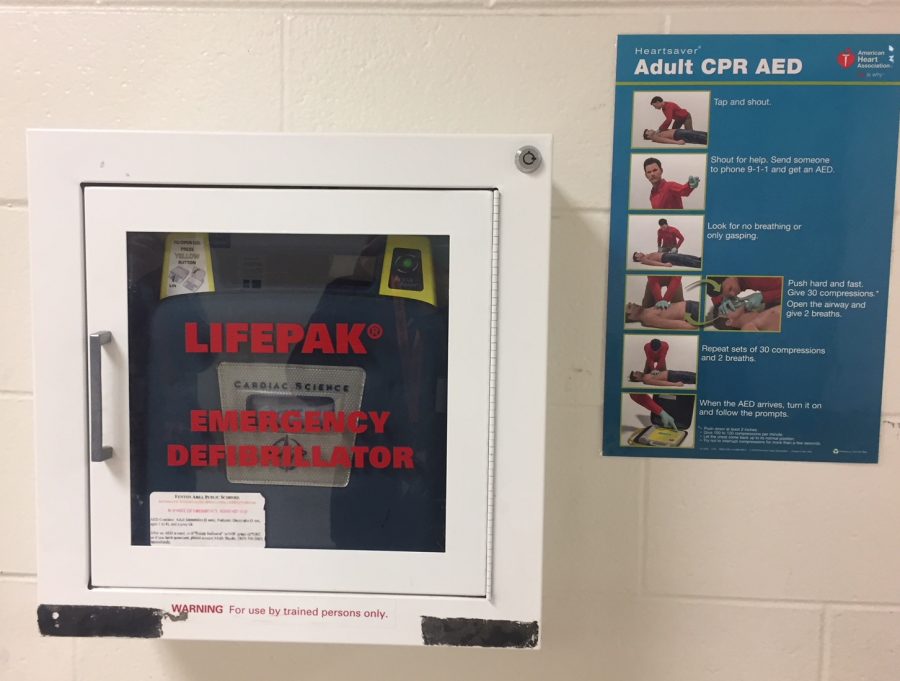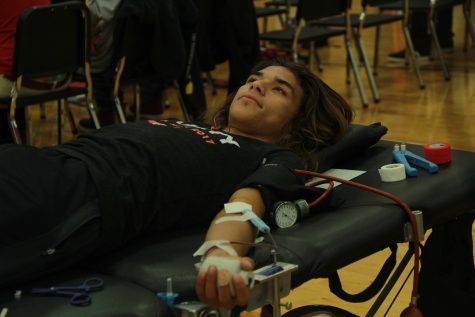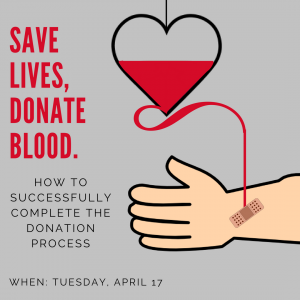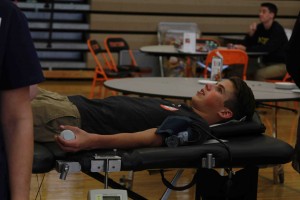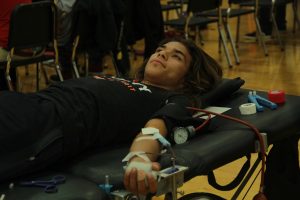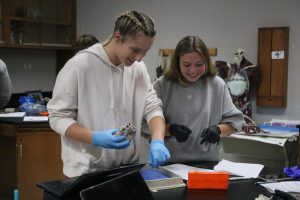The what, where and how of automated external defibrillators
PHOTO Madi Wheeler
March 13, 2018
In the case that there is ever an emergency, it can be a very scary thing. If there is ever an emergency that someone is to go into cardiac arrest, there are many staff members who are trained to use an automated external defibrillator (AED), a device used to help restore a heart to its normal rhythm.
“We have three AEDs in the school,” Bakker said. “One is located outside of the square, one just past the locker room hallway, as if you were heading down the hallway towards the pool. There is also one down in the athletic training room in Mitch’s office and that one is usually portable so that if he is outside at sporting events he carries that with him.”
Were anyone to go into cardiac arrest or be in a situation where an AED is needed, an AED can check the person’s heart rhythm and determine whether an electric shock is needed to try to restore a normal rhythm.
“We have teachers and coaches that are trained [to use AEDs],” Bakker said. “All of our varsity head coaches are trained by rule they have to be. We have trained some of our sub varsity coaches but not all of them have been trained because by rule they don’t have to be. We also have a MERT (Medical Emergency Response Team) of teachers and staff who are trained in first aid, CPR, AEDs, etc. All of these staff members have trained and practiced with them and seen how work and what they do.
While there are teachers, staff members and some students that are trained to use an AED, the machine can be used by anyone as it will walk a user through the process so that it may assist if someones life is in current danger.
“Technically, any person if they were to witness someone having a heart attack or lose consciousness could use an AED,” Bakker said. “Someone may tell you as a bystander to go grab the AED and then walk you thru what they need you to do. When you open up the cover of an AED, the machine will start talking to you, they tell you exactly what to do.”
A defibrillator comes with a guide so that anyone can use one in the case that it is necessary. However, it can be useful to know how to identify if someone is in need of one.
“If someone is having SCA, you may see him or her suddenly collapse and lose consciousness,” according to National Heart, Lung and Blood Institute. “Or, you may find the person unconscious and unable to respond when you call or shake him or her. The person may not be breathing, or he or she may have an abnormal breathing pattern. If you check, you usually can’t find a pulse. The person’s skin also may become dark or blue from lack of oxygen. Also, the person may not move, or his or her movements may look like a seizure (spasms).”
Were someone to be in a situation where an automated external defibrillator was needed, it can be useful for a bystander to be able to use one. Most public places will have an AED on hand.

